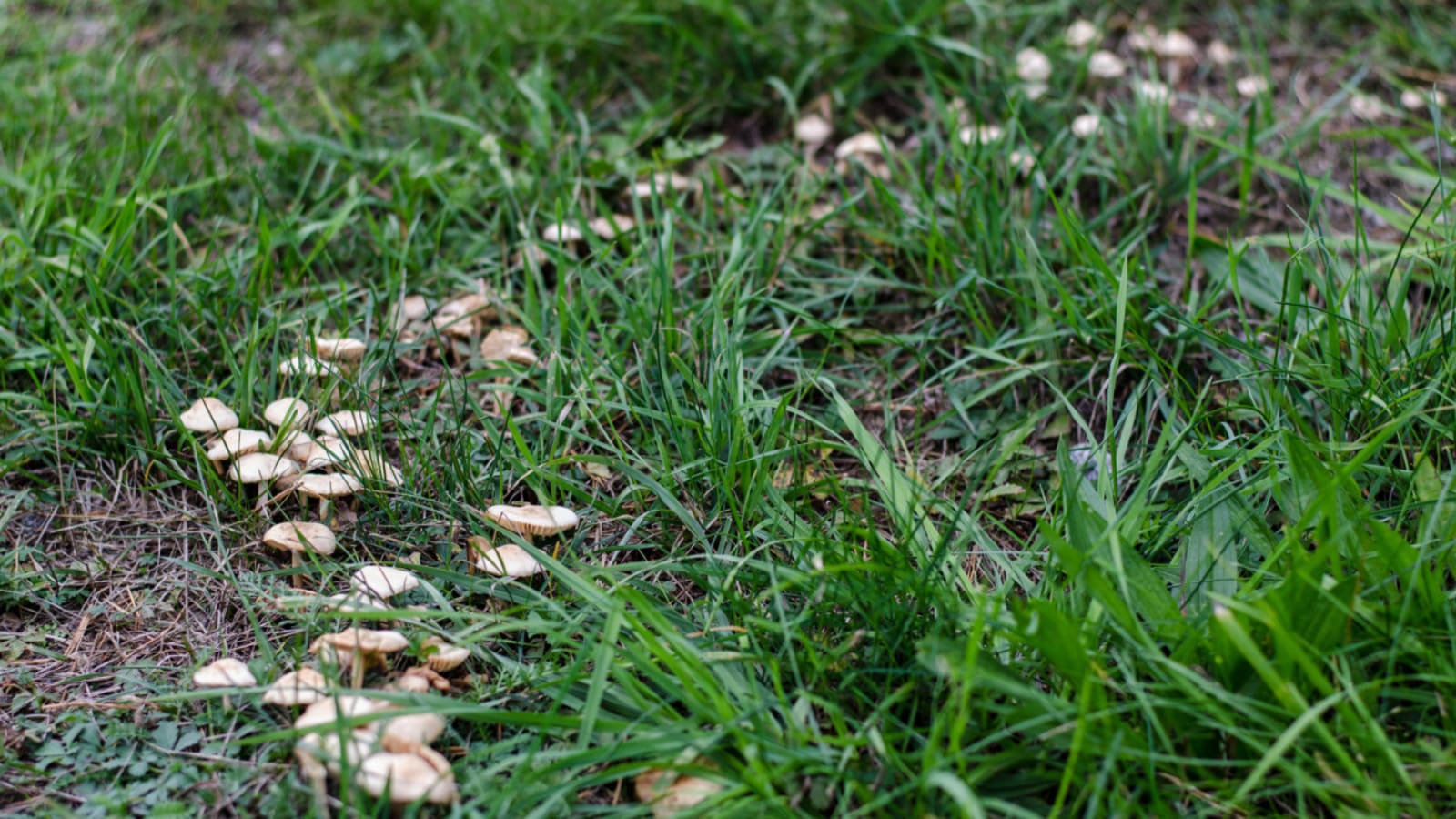
If you've noticed discolored patches or areas of dead grass, you may be dealing with a lawn fungus. These molds and fungi can quickly take over a beautiful lawn and kill your curb appeal.
Cool-season grasses are most susceptible when there is excess moisture and hot conditions. Warm-season grasses suffer when it's cooler out and the healthy grass growth can't overcome the fungal spores. While commercial fungicides are widely available, making your own DIY lawn fungicide can be just as effective—and far gentler on both your wallet and the environment.
Common Types of Lawn and Grass Fungus
- Powdery Mildew: The most common lawn disease looks like a dusting of white flour. It's not the most detrimental but it makes an otherwise healthy lawn vulnerable to other fungi.
- Dollar Spot: Small, silver-dollar-sized yellow patches of grass. Primarily affects cool weather grass under wet conditions.
- Brown Patch: Irregular areas of brown grass appear on your lawn, especially in humid weather. Thrives on acidic soil caused by nitrogen fertilizer.
- Snow Mold: Whitish or pinkish mold that forms in cold conditions with excessive moisture like after snow melts.
- Leaf Spot: Dark, wet-looking spots on grass blades that can spread if left untreated.
- Rust Fungus: Orange or yellowish powder on grass blades that rubs off easily.
- Fairy Rings: Circular patches of darker green grass or mushrooms appearing in your lawn. Common when excess water meets late summer/early autumn temperatures.
Is DIY Lawn Fungicide as Effective Against All Types of Mold
DIY fungicides can be effective solution, but natural products work best if the problem is caught early. No single treatment is perfect for every type of fungus or grass. Some infections are going to have a deeper, more persistent hold and therefore require multiple applications. It's important to understand that fungi has a harder time taking hold on strong grass or healthy lawns. Proper treatment starts with healthy soil structure, preventative measures, and monitoring for fungal diseases early.
How to Make Your Own Fungicide for Grass Mold
This remedy for lawn fungus works by creating an alkaline environment that inhibits fungal growth while the oil helps the solution adhere to the blades of grass.
You'll need
- Baking soda
- Liquid dish soap (mild)
- Vegetable or neem oil
- Water
- Spray bottle or garden sprayer
- Hydrogen peroxide
1. Prepare the Basic Fungicide Solution
- Mix 2 tablespoons of baking soda with 1 teaspoon of liquid dish soap.
- Add 2 tablespoons of vegetable or neem oil.
- Combine the ingredients in a gallon of water and stir well.
- Pour the mixture into a spray bottle or garden sprayer.
2. Apply the Fungicide
- Spray the solution evenly over affected areas when the grass is dry and there's no forecasted rain.
- Make sure to coat the grass thoroughly, including the undersides.
- Limit excess foot traffic and keep your mower blades tucked away for a few days. Natural treatments need time to work undisturbed.
- Reapply every 7-10 days or after heavy rain.
3. Tackle Stubborn Mold
- Mix equal parts water and 3% hydrogen peroxide.
- Spray this solution directly onto heavily affected areas.
- Be cautious not to overuse hydrogen peroxide, as it can damage grass in large quantities.
4. Improve Lawn Care Practices
- Know the correct mowing height for your type of grass. Collect grass clippings and other organic matter.
- Water deeply but less frequently to avoid creating a damp environment.
- Go easy on the nitrogen-rich fertilizer as fungal growth spreads fastest in lush grasses.
- Improve drainage and airflow by aerating at least once a year. Removing plugs of soil will reduce soil compaction too.
Natural remedies or homemade treatments may not solve every fungal issue overnight. But it is a great first line of defense to stop spread on larger lawns. Don't overuse this product, too much hydrogen peroxide can stress your lawn. If in doubt, contact your local garden center to identify the best active ingredient and chemical fungicide to restore your healthy turf.
More must-reads:
- Mike Tomlin provides update on Steelers’ pursuit of Aaron Rodgers
- Biggest reaches from Day 3 of NFL Draft: Did teams get too aggressive with RBs?
- The 'Second QB selected in every NFL Draft since 2000' quiz
Breaking News
Trending News
Customize Your Newsletter
 +
+
Get the latest news and rumors, customized to your favorite sports and teams. Emailed daily. Always free!








